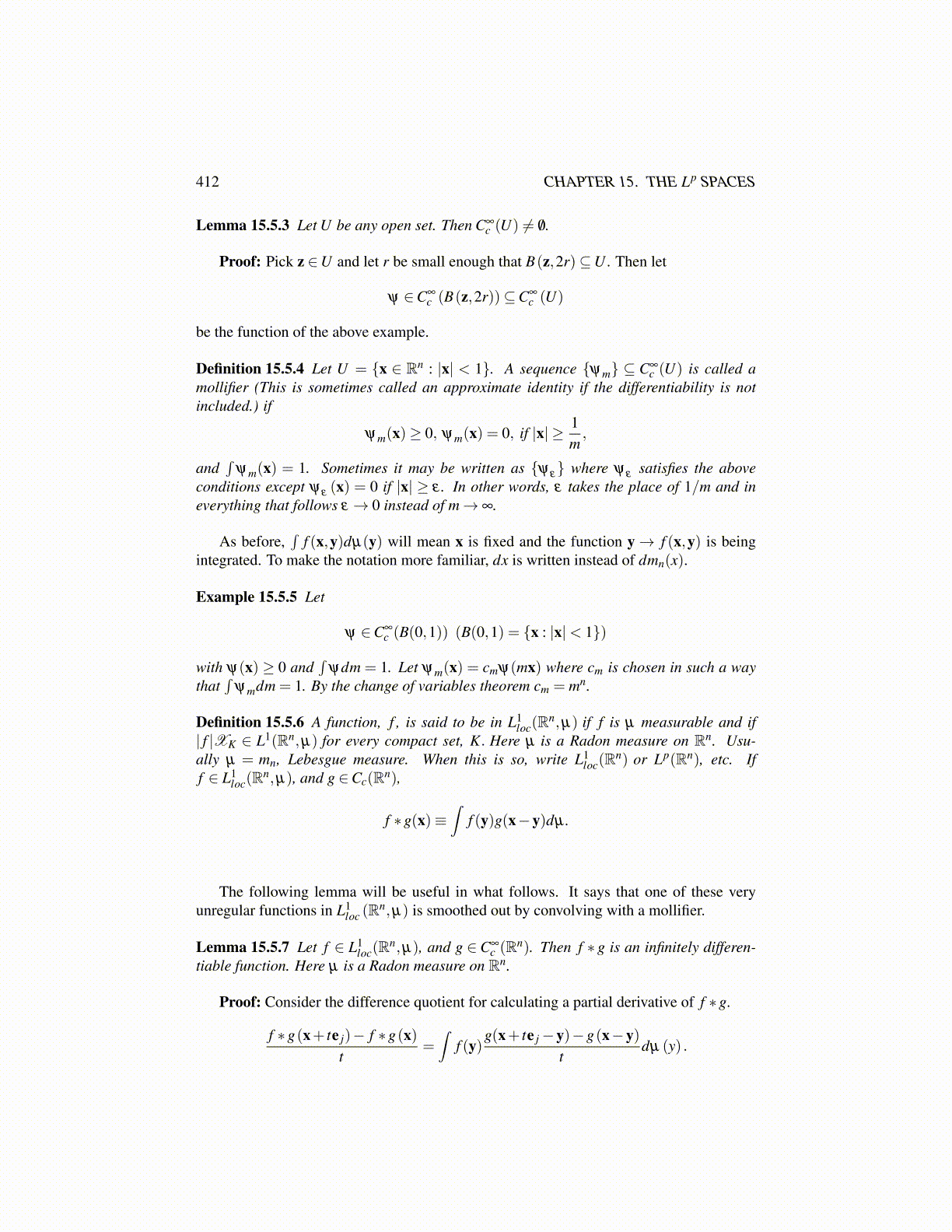
412 CHAPTER 15. THE Lp SPACES
Lemma 15.5.3 Let U be any open set. Then C∞c (U) ̸= /0.
Proof: Pick z ∈U and let r be small enough that B(z,2r)⊆U . Then let
ψ ∈C∞c (B(z,2r))⊆C∞
c (U)
be the function of the above example.
Definition 15.5.4 Let U = {x ∈ Rn : |x| < 1}. A sequence {ψm} ⊆ C∞c (U) is called a
mollifier (This is sometimes called an approximate identity if the differentiability is notincluded.) if
ψm(x)≥ 0, ψm(x) = 0, if |x| ≥ 1m,
and∫
ψm(x) = 1. Sometimes it may be written as {ψε} where ψε satisfies the aboveconditions except ψε (x) = 0 if |x| ≥ ε . In other words, ε takes the place of 1/m and ineverything that follows ε → 0 instead of m→ ∞.
As before,∫
f (x,y)dµ(y) will mean x is fixed and the function y→ f (x,y) is beingintegrated. To make the notation more familiar, dx is written instead of dmn(x).
Example 15.5.5 Let
ψ ∈C∞c (B(0,1)) (B(0,1) = {x : |x|< 1})
with ψ(x) ≥ 0 and∫
ψdm = 1. Let ψm(x) = cmψ(mx) where cm is chosen in such a waythat
∫ψmdm = 1. By the change of variables theorem cm = mn.
Definition 15.5.6 A function, f , is said to be in L1loc(Rn,µ) if f is µ measurable and if
| f |XK ∈ L1(Rn,µ) for every compact set, K. Here µ is a Radon measure on Rn. Usu-ally µ = mn, Lebesgue measure. When this is so, write L1
loc(Rn) or Lp(Rn), etc. Iff ∈ L1
loc(Rn,µ), and g ∈Cc(Rn),
f ∗g(x)≡∫
f (y)g(x−y)dµ .
The following lemma will be useful in what follows. It says that one of these veryunregular functions in L1
loc (Rn,µ) is smoothed out by convolving with a mollifier.
Lemma 15.5.7 Let f ∈ L1loc(Rn,µ), and g ∈C∞
c (Rn). Then f ∗ g is an infinitely differen-tiable function. Here µ is a Radon measure on Rn.
Proof: Consider the difference quotient for calculating a partial derivative of f ∗g.
f ∗g(x+ te j)− f ∗g(x)t
=∫
f (y)g(x+ te j−y)−g(x−y)
tdµ (y) .